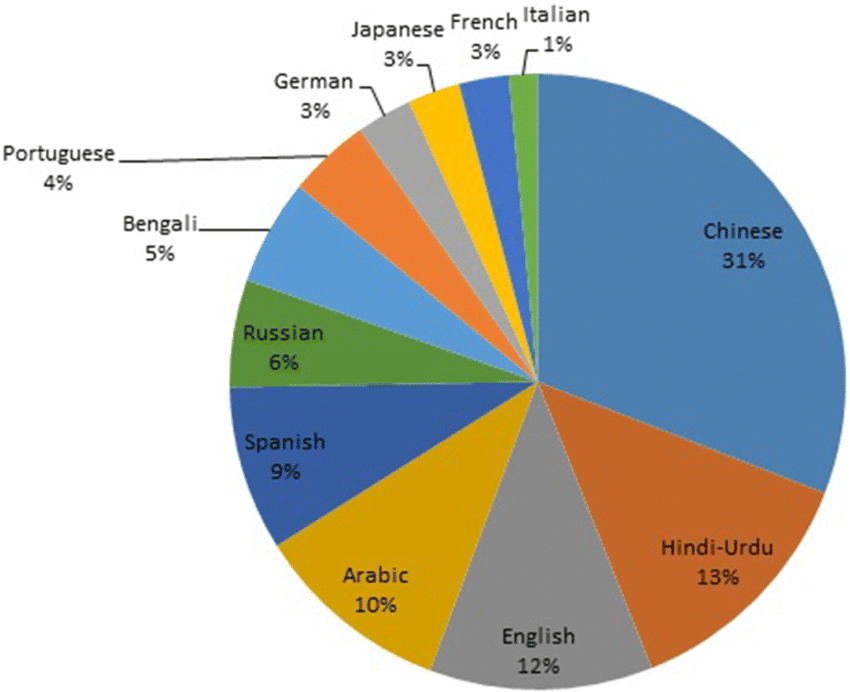Why Linguistic Diversity Matters
The Top Linguistic Hotspots: A Global Roundup
Ultra-Diverse Nations (500+ Languages)
|
Country
|
Number of Languages
|
Fun Fact
|
|---|---|---|
 Papua New Guinea Papua New Guinea |
840
|
Home to over 800 indigenous languages—more than anywhere else! Isolation in its highlands and islands has created a linguistic explosion.
|
 Indonesia Indonesia |
710
|
Spanning 17,000+ islands, it’s a melting pot of Austronesian tongues, with Javanese and Sundanese leading the pack.
|
 Nigeria Nigeria |
524
|
Africa’s linguistic giant, blending Hausa, Yoruba, Igbo, and hundreds more across ethnic groups.
|
Highly Diverse Nations (200-499 Languages)These countries are vibrant mosaics, where borders blur into a babel of voices.
|
Country
|
Number of Languages
|
Fun Fact
|
|---|---|---|
 India India |
453
|
From Hindi to Tamil, this subcontinent’s 22 official languages barely scratch the surface of its diversity.
|
 United States United States |
335
|
Beyond English and Spanish, immigrant waves bring Navajo, Cherokee, and emerging creoles.
|
 Australia Australia |
319
|
Indigenous Aboriginal languages (like Warlpiri) mix with multicultural arrivals for a surprisingly rich scene.
|
 China China |
305
|
Mandarin dominates, but minorities speak Tibetan, Uyghur, and over 300 others in remote regions.
|
 Mexico Mexico |
292
|
Nahuatl and Maya endure alongside Spanish, with 68 indigenous languages officially recognized.
|
 Cameroon Cameroon |
275
|
“Africa in miniature” lives up to its name with Bantu, Afro-Asiatic, and Niger-Congo languages galore.
|
 Brazil Brazil |
228
|
Portuguese rules, but Amazonian indigenous tongues add exotic flavors like Tupi-Guarani.
|
 DR Congo DR Congo |
214
|
Swahili and Lingala are widespread, but over 200 ethnic groups fuel its linguistic depth.
|
 Canada Canada |
195
|
French, English, and Indigenous languages like Cree create a bilingual-plus paradise.
|
 Philippines Philippines |
191
|
Tagalog evolves into Filipino, but Visayan and Ilocano keep the archipelago chatting in variety.
|
Notably Diverse Nations (Under 200 Languages)Even “lower” on the list, these spots pack a punch—proving diversity thrives everywhere.
|
Country
|
Number of Languages
|
Fun Fact
|
|---|---|---|
 Russia Russia |
159
|
From Russian to Tatar and Chukchi in Siberia, its vast expanse harbors hidden tongues.
|
 Malaysia Malaysia |
144
|
Malay is official, but Chinese dialects and indigenous Orang Asli languages add layers.
|
 Vietnam Vietnam |
112
|
Vietnamese leads, with Muong and Hmong reflecting hill tribe traditions.
|
 Germany Germany |
95
|
German unifies, but regional dialects like Bavarian and immigrant Turkish keep it lively.
|
 France France |
95
|
Beyond French, Breton and Occitan whisper of Celtic and medieval roots.
|
 Thailand Thailand |
88
|
Thai dominates, but hill tribes speak Karen and Lahu in the north.
|
 Pakistan Pakistan |
85
|
Urdu and Punjabi shine, alongside Pashto and Balochi in borderlands.
|
 United Kingdom United Kingdom |
85
|
English everywhere, but Welsh, Scots Gaelic, and Scots dialects add flavor.
|
 Iran Iran |
84
|
Persian prevails, with Kurdish and Luri echoing ancient Persian empires.
|
 Central African Republic Central African Republic |
83
|
Sango bridges over 70 ethnic languages in this heart-of-Africa nation.
|
(Quick shoutout to the rest: New Zealand (65), Turkiye (54), Israel (53), Netherlands (50), Ukraine (48), Italy (47), Bangladesh (45), South Africa (42), Afghanistan (42), Argentina (40), Belgium (36), Spain (34), Singapore (31), Saudi Arabia (25), Japan (19), Ireland (13), Sri Lanka (12), Hong Kong (11), Palestine (10).)
Surprising Insights from the Data
- Island Power: Notice how island nations like Papua New Guinea, Indonesia, and the Philippines top the charts? Water barriers naturally foster isolation, birthing new languages over millennia.
- Africa’s Edge: Four African countries (Nigeria, Cameroon, DR Congo, Central African Republic) crack the top 10, underscoring the continent’s unmatched ethnic mosaic—home to about one-third of the world’s languages.
- Immigration Boost: Places like the US, Australia, and Canada owe much of their counts to global migrants, blending old-world tongues with new-world innovations.
- The Low End: Japan and Ireland? Their low numbers reflect historical unification efforts, but dialects and revivals (like Irish Gaelic) are fighting back.
If you’re traveling, apps like Duolingo or Google Translate are lifesavers, but nothing beats learning a local greeting—it’s the ultimate bridge-builder.
Wrapping Up: A Call to Linguistic Curiosity
This snapshot reminds us: Language isn’t just communication; it’s heritage. With climate change and urbanization threatening minority tongues, preserving them is urgent. What’s your favorite multilingual spot? Drop a comment below—maybe you’ve got a story from Nigeria’s markets or Indonesia’s islands!Data sourced from Ethnologue via Wikipedia and Visual Capitalist (2025 updates). Stay tuned for more “World of Statistics” dives into global quirks. What’s next—coffee consumption or tallest mountains? Let me know!
